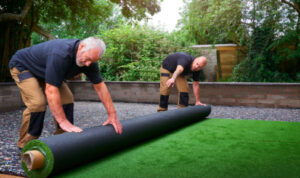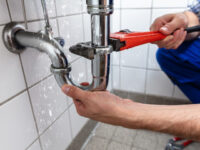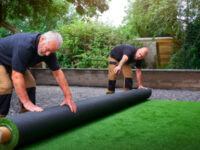Choosing Artificial Turf For Gardens
The first step in installing artificial turf is to choose a reputable contractor. Look for someone with a history in the industry who can provide references from previous clients. Ask about their reputation, experience, and warranty terms.
Make sure your artificial grass is toxin- and lead-free. It should also be UV-stabilised to resist degradation in direct sunlight. Click https://vantaoutdoors.com/artificial-turf/ to learn more.
Artificial turf is a great option if you want to replace your thirsty lawn with something that looks the part and doesn’t require any water or maintenance. It’s also a good choice for reducing your carbon footprint and creating an attractive outdoor space. There are many things to consider when choosing the right turf for your garden. You’ll need to select the best face weight, pile height, thatch color, and blade shape for your needs. It’s also a good idea to order sample turf to see how it feels and compare colors, density, yarn types, and blade heights before deciding.
The C-shaped blades found in most synthetic turf are designed to resist flattening and withstand heavy foot traffic. This makes them ideal for sports fields and landscapes that receive a high amount of foot traffic. In addition, they are designed to withstand heavy equipment and cars without getting bent out of shape. This durable design means your turf will last longer and look great for a long time.
In addition to their durability, C-shaped blades help prevent turf from becoming hot and uncomfortable in the sun. They can diffuse sunlight and spread the pressure on several points instead of one, so the turf doesn’t become too hot. This technology has been proven through rigorous lab testing, and it’s an important feature of any synthetic turf.
Several factors go into designing the perfect grass, and it’s easy to get caught up in the terminology and lose sight of what matters. The blade shape of a turf product is an important factor that often goes unnoticed, but it can make the difference between a good or bad product.
When shopping for a new turf, you must find the one right for your home or business. A professional can recommend the best turf products for your unique needs. The installation takes about a day and requires a bare ground with a slope to ensure proper drainage. The ground should be leveled, compacted, and covered with a geotextile weed suppressor.
The curved S-shaped blades in synthetic grass help the turf look more natural and soft. They also reduce the mirroring effect of sunlight on the turf, which can make it look white rather than green. In addition, they prevent the deterioration of the fibers and provide a high level of durability for the turf. The S-shaped blades are usually more expensive than other artificial turf types but offer many advantages.
When choosing a synthetic turf for your garden, you should consider how it will be used and what kind of maintenance it will require. Finding a type that looks as close as possible to the grass species in your area is important. For example, fescue is an excellent choice for residential lawns because it requires little maintenance and is durable enough to handle heavy traffic. It also resists damage from power mowers and pets, making it a smart choice for busy homeowners.
One of the most common ways to install a synthetic lawn is to put it on top of existing soil. However, this method can cause problems, such as wrinkling and dimples in the turf, when the soil expands and contracts during wet and dry seasons. Use a base that will keep the turf from moving, such as crushed stone or pea gravel.
Another important consideration when buying synthetic turf for your yard is its face weight, which refers to how many ounces of fiber it contains. A higher face weight means a more durable product. It would be best to look for turf with thatch, an additional fiber miming natural grass’s inconsistencies and brown color.
In addition to face weight and thatch, you should also consider the quality of the turf’s backing material. A good turf will have both primary and secondary backing made from polypropylene. The primary backing is the durable fabric that holds the tufts of fake grass together. In contrast, the secondary backing is applied to the reverse side of the primary backing and helps seal it permanently.
There are various options available for homeowners who want to install artificial turf. Some companies install it as a “roll-out” of sod laid down over an existing lawn, while others use a “floating method,” which involves laying the turf over a base of sand or soil. Which one is right for you depends on several factors, including the size of your space, whether you have pets, and what kind of landscape you want to create. For example, a synthetic putting green requires high-quality turf with quick drainage and a natural look.
Polypropylene is a common choice for residential installations, as it’s the least expensive of the three materials. It also has a fine texture and offers the most realistic look of real grass. However, it is less durable than other options and is susceptible to heat damage after prolonged exposure. It can also be stained by acid dyes such as those found in coffee or wine, but the green dyes used in nylon turfs are typically enough to hide these stains.
Nylon is a great choice in a hot or tropical climate. It can withstand high temperatures and direct sunlight and doesn’t deform or melt when exposed for extended periods. Nylon is more expensive than PP or PE, so it’s only sometimes used for large applications. Instead, it’s often used with a polyethylene turf for added strength and stability.
While the most popular type of synthetic turf is mLLDPE C6 or metallocene linear low-density polyethylene, many other types are on the market. Some have a softer extrusion, which makes them more comfortable to walk on. Others have a more rugged and textured feel, which makes them better for high-traffic areas. Some even have antimicrobial properties, which help prevent odors and bacteria.
The best type of synthetic turf for your backyard will depend on several factors, including your budget and the kind of landscaping you want to do. While most artificial turfs are easy to maintain, it’s important to research the specific products you’re considering before purchasing. It’s important to find a company with experience installing these products and who can help you choose the best option.
There are a variety of synthetic turf options that look like natural grass. Each type of turf offers different benefits and features. Your choice will depend on your yard or business’s specific use and maintenance requirements. Several factors will impact how long your artificial turf lasts. The most important considerations are the raw materials used to make the synthetic turf, its durability, and its life-like appearance.
The most common raw material for artificial turf is polyethylene. This is the most widely used synthetic turf fiber raw material on the market, and it has many advantages over other types of fake grass. It is soft and durable and looks very similar to real grass. It can also withstand the wear and tear of heavy foot traffic. It is also resistant to ultraviolet light and will not fade over time. It is also easy to clean and maintain.
Another popular raw material for artificial turf is nylon. This material is more expensive than polyethylene, but it offers higher durability and realism. Nylon is also abrasion-resistant, which makes it a great choice for sports and other high-impact activities. It can also withstand high temperatures and direct sun without melting or deforming.
Nylon is also UV-resistant, which will help extend your artificial lawn’s lifespan. Its low vapor pressure will also help to prevent moisture build-up. It is important to remember that synthetic turf cannot be used in place of soil and should always be installed over a compacted base of gravel or sand. This will prevent the accumulation of dirt, which can damage the synthetic turf and cause rutting and sinking.
When choosing a turf product, it is important to consider the gauge of the yarns. The higher the gauge, the thicker and denser the fibers. Higher gauges are typically used for indoor or athletic applications, while lower grades are best for landscaping and residential areas. It would be best to consider the backing of your turf, which is made of a woven plastic that binds the synthetic fibers together. This backing is available in two styles: permeable and hole-punched. An absorbent backing allows water and pet urine to pass through the turf, while a hole-punched backing has drainage holes every few inches.




